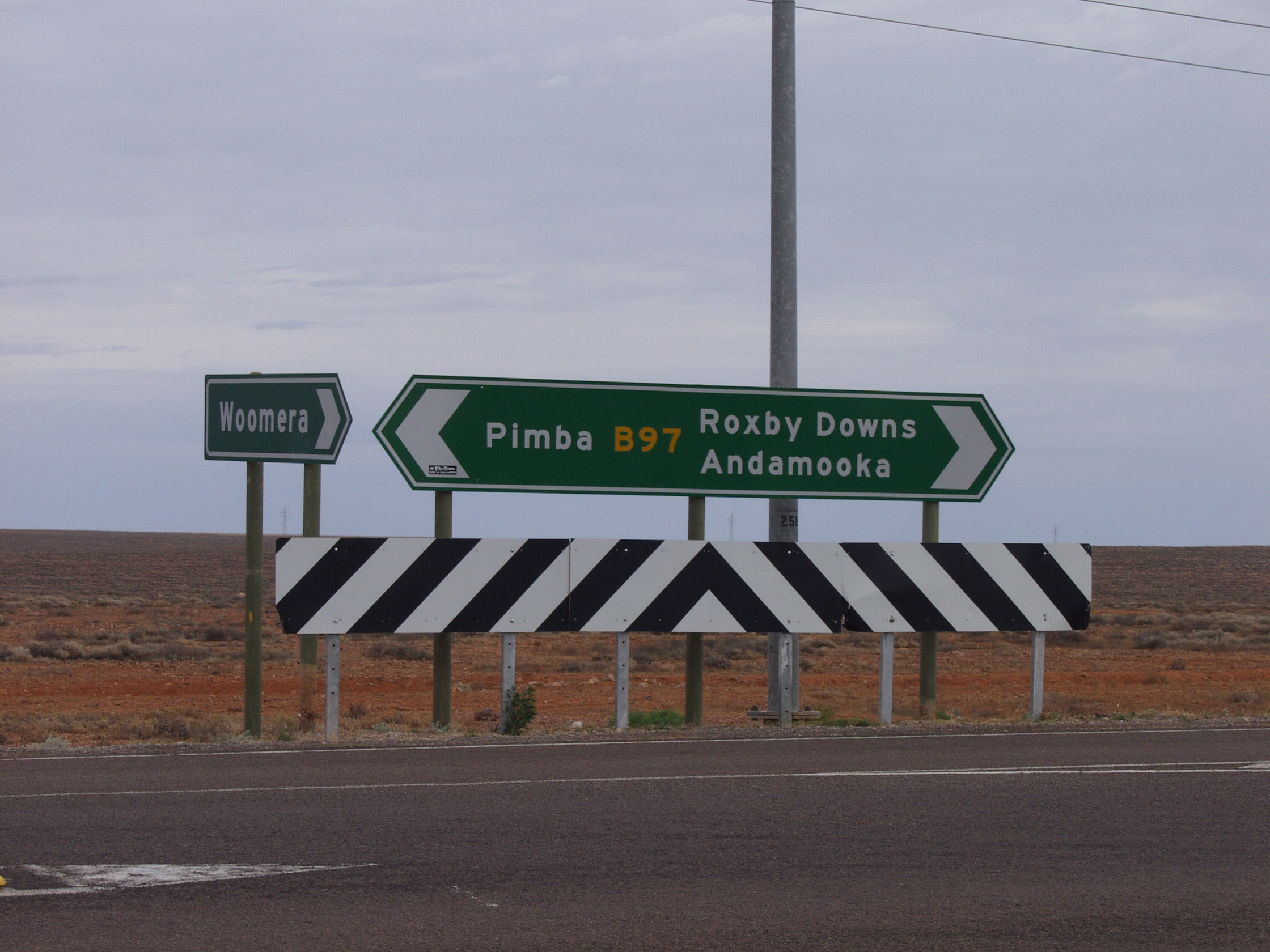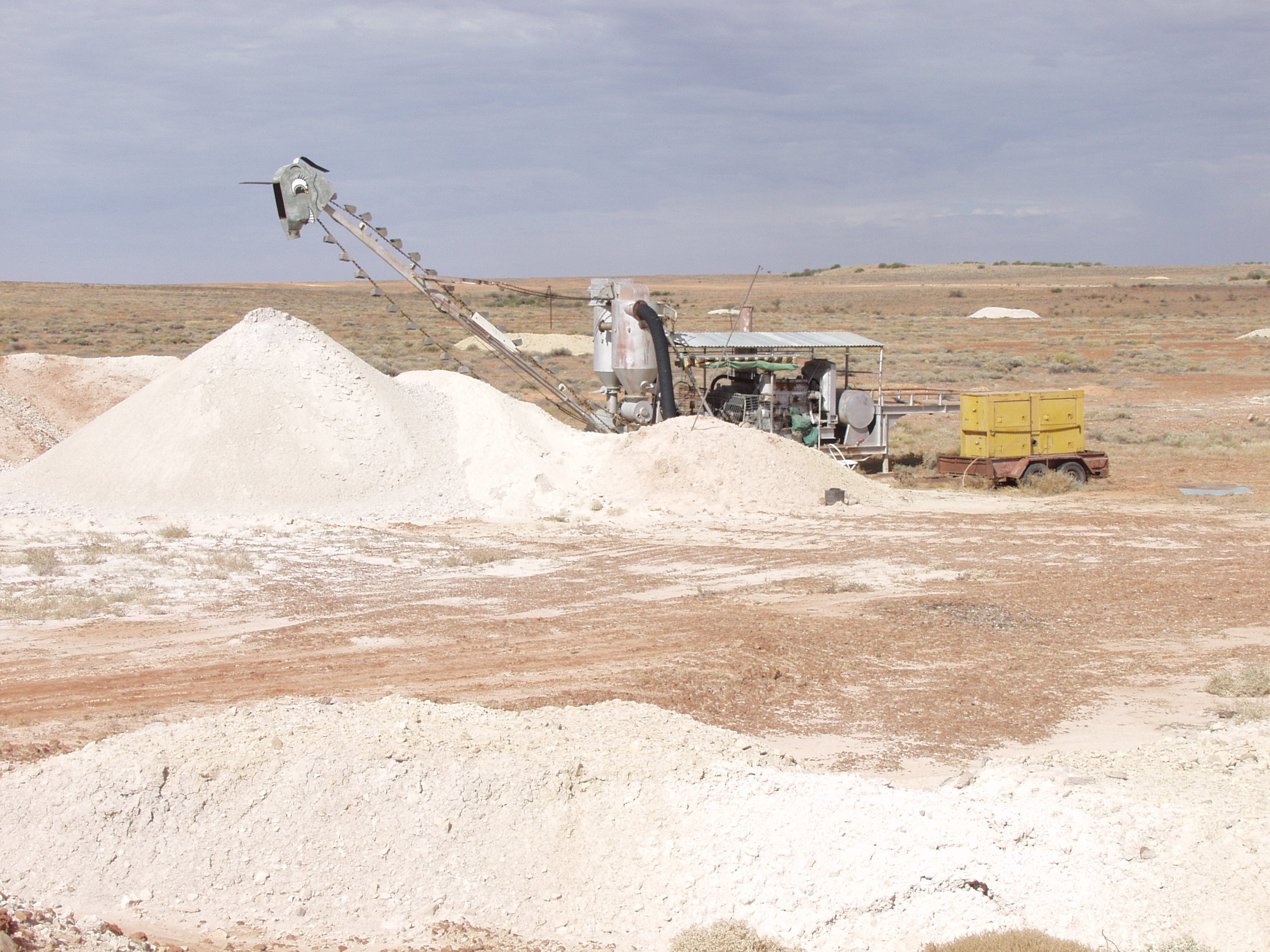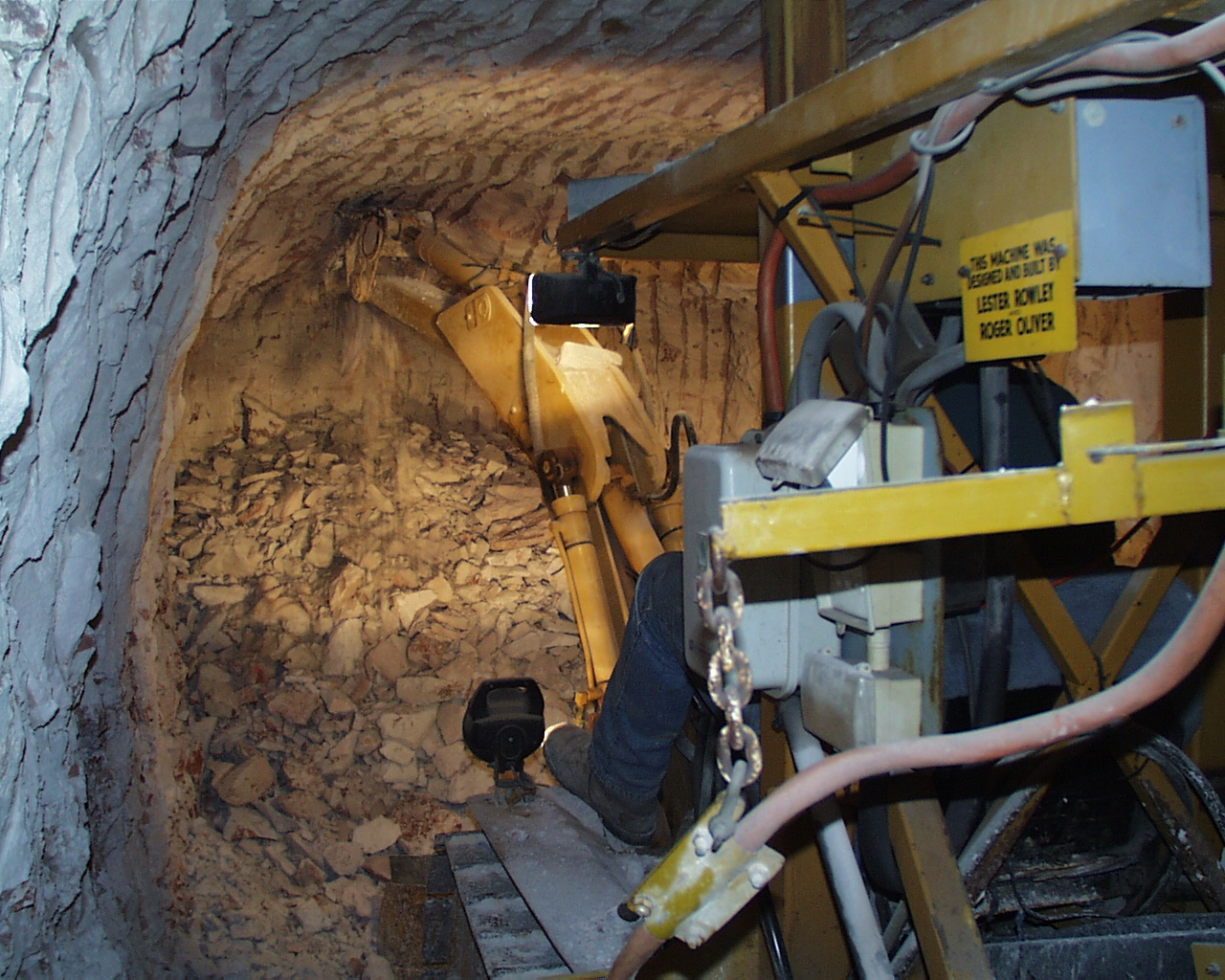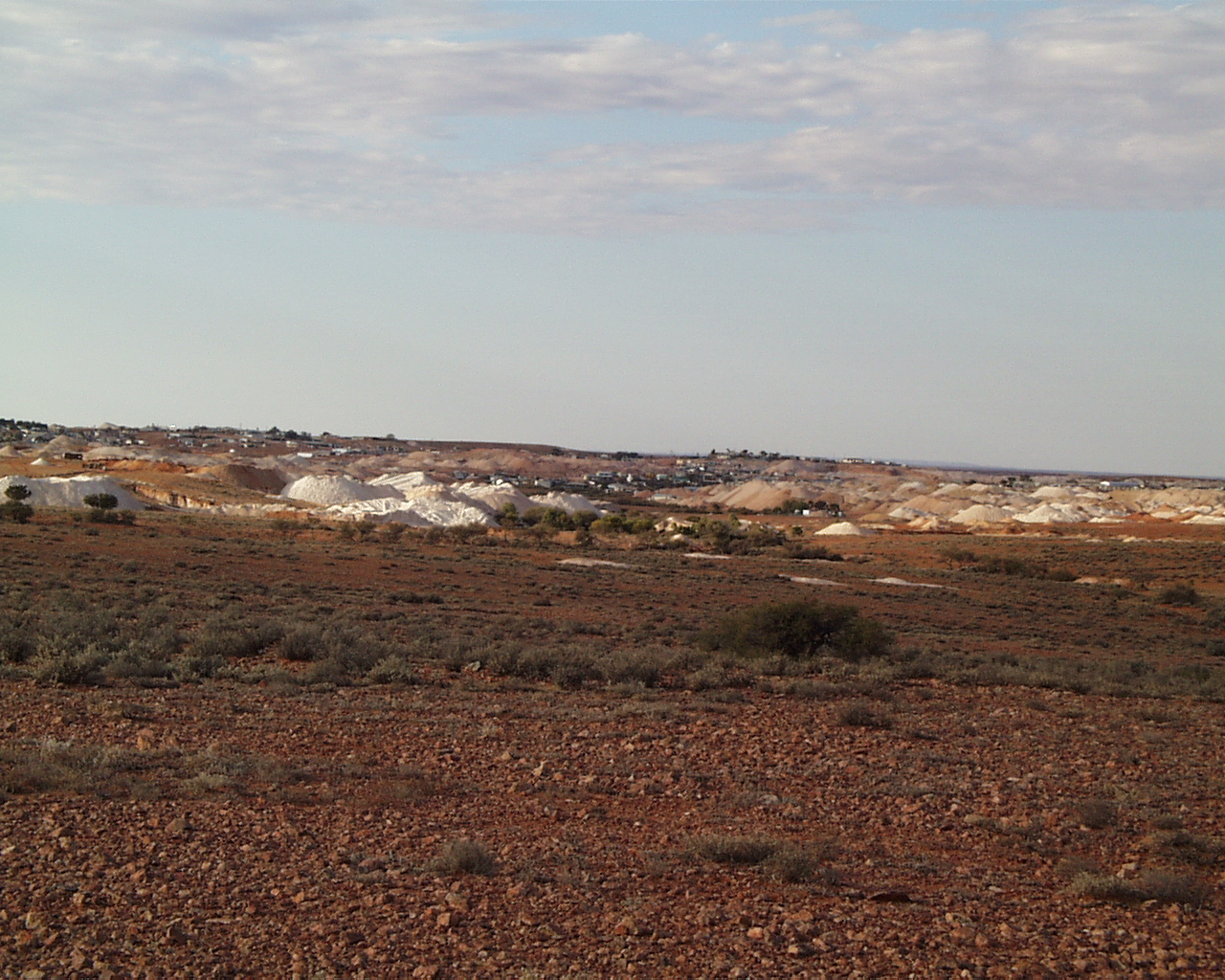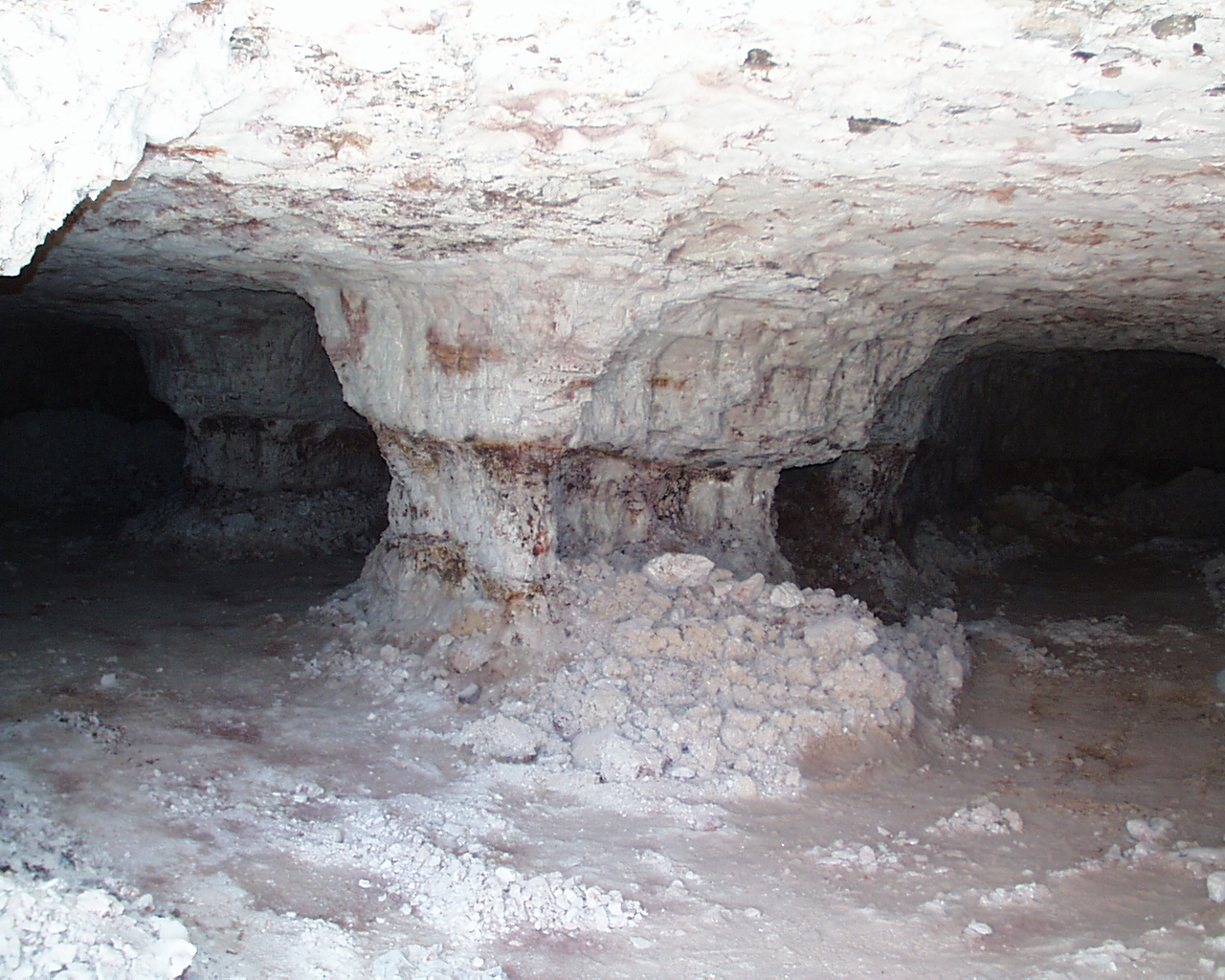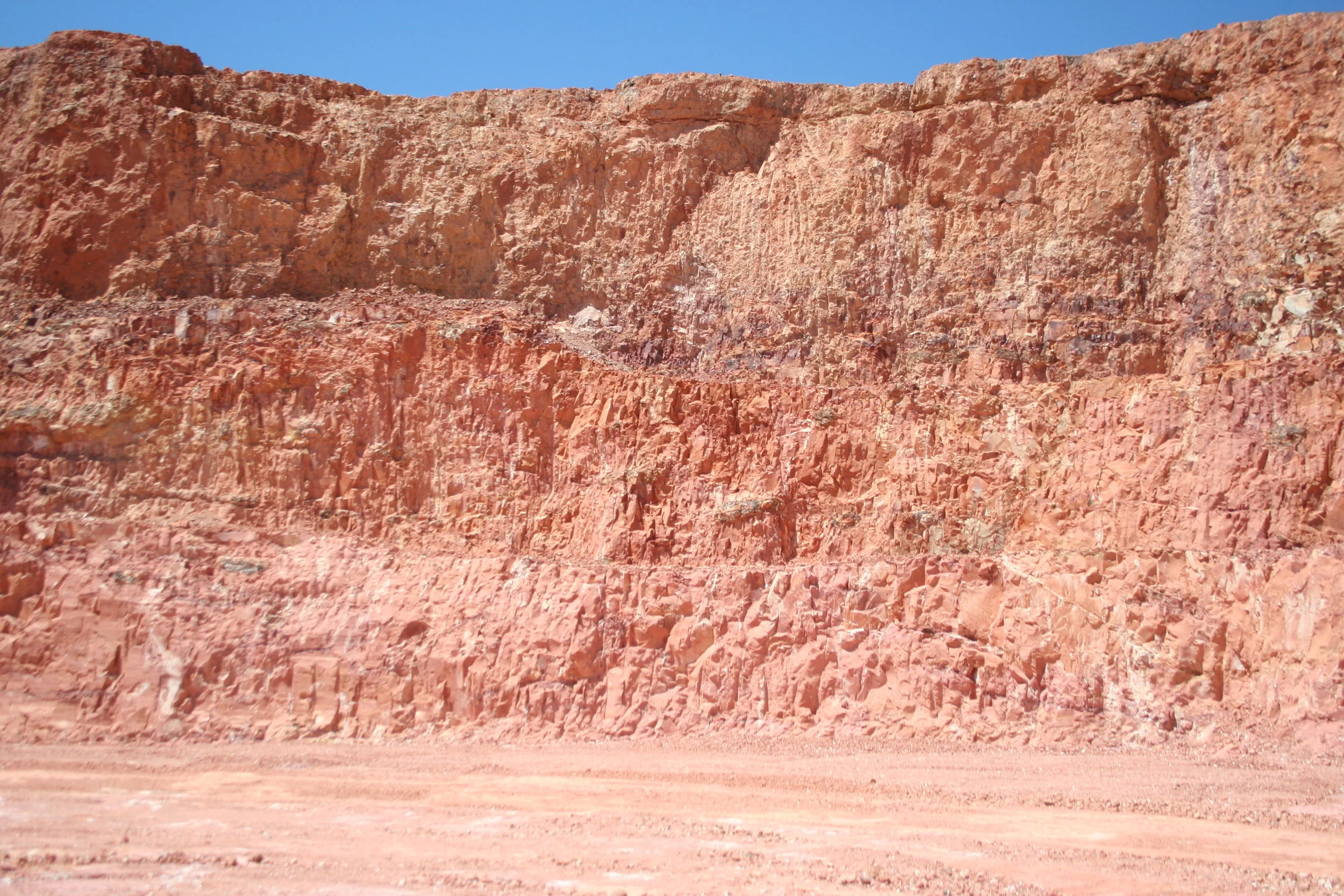Andamooka Opal Fields
An aerial photograph of the Andamooka opal fields taken by Terry Coldham
A LITTLE HISTORY
The traditional name for Andamooka in indigenous history as given to the academy by an indigenous correspondent is Arndoomoka, (Arn-Doo-Moka) and is a combination of two Kuyani words meaning “Loaded (or powerful ) Bone”.
Len Cram in his Volume 3 of “A journey with colour” records the following :
The area known as Andamooka was first explored by Edward John Eyre who named Lake Torrens which is about 20 kilometres (12 miles) to the east of the Andamooka township. John McDowall Stuart followed in 1858 and named the area which was spelt Andamorka.
It is also recorded that the name is derived from an interpretation of the local Aboriginal language and has two possibilities. The most accepted meaning is “a large waterhole” the other is considered a possible corruption of either of two words: jantamuka or jandarimoko. the first syllable “Anda” could be based on the Aboriginal word ‘junta’ meaning wide, or ‘jandari’ meanint meteorite. The second half could come fom ‘muka’ or ‘moko’ , both meaning a hard object.
The discovery of the fields are attributed to Roy shepherd and Sam Brooks who were boundary riders for the nearby Andamooka pastoral station. Len Cram records in “A Journey with Colour, Volume 3, Page 239:
“While out working one day on a particular site, a heavy thunderstorm saturated the area. With the passing of the rain ‘Roy’ noticed there were different coloured stones lying on the ground . Not knowing at the time what they were ‘he said to Sam’: “let’s see how far we can through them”.
Although the boys (Roy Shepherd was about 17 years old) were the first, it was Bruce Foulis (the manager of Andamooka Station) who must be given the credit for establishing the field due to his interest in the gem.
Alan Treloar was the first to take out a prospecting licence for opal and along with Paddy Evans the first to find a nice parcel of opal. It is recorded in the Sherman Archives recorded by Greg Sherman:
“The first opal mined at Andamooka was sent , each piece carefully wrapped in cotton wool, to a Sydney bank, whose manager was asked to contact opal buyers for inspection. This crystal opal was somewhat different to the known light opal of Coober Pedy and White Cliffs, so buyers were reluctant to make offers………..Ernie Sherman met Alan Treloar at the boundary riders hut, just inside the boundary gate, in 1932 and close to the diggings and eventually bought the parcel. It was super stuff, he not only bought the first parcel of opal from Andamooka, but it was the beginning of a long relationship with many of the miners.”
Ernie Sherman outside his dugout on Opal Creek in 1932. (Sherman Archives)
Ernie Sherman with the vehicle used for transport between Andamooka Station and the opal fields. The vehicle belonged to Sam Brooks.
Greg Sherman outside his dugout in Andamooka
Andamooka after an outback storm, Sherman Archives
A LITTLE GEOGRAPHY
Andamooka township is located 640 kilometres by road north of Adelaide and approximately 110 kilometres north east from Woomera on the road to Roxby Downs and almost on the western shore of Lake Torrens in South Australia.
Today the Stuart highway follows the trans Australian Railway from Port Augusta to Pimba which is the nearest railhead and serves the townships of Woomera and then further on to the large mine of Olympic Dam, and also into Andamooka. The climate is semi arid and rainfall in the area being 125mm - 200mm annually. Days can be hot with temperatures over 45C several days in a row. Vegetation is mostly salt bush and scrub, westward are sand dunes with native pines and acacias with native grasses.
Opal Creek runs through the middle of the town and has become the main road.
A view of the Andamooka township about 1999.
A preserved dugout on opal creek in Andamooka township
The author on the salt flats at the edge of Lake Torrens.
A LITTLE GEOLOGY
The Andamooka precious stones field is a smaller group of workings south of Coober Pedy near the edge of Lake Torrens. The occurrence of opal at Andamooka as in Coober Pedy is associated with the Bulldog Shale. The Bulldog Shale is a part of the Marree Subgroup and is of Early Cretaceous age. The Marree Subgroup at Andamooka is a shallow marine sequence that has been divided into three main sub-units. The top sub-unit is called ‘kopi’ (a name unique to Andamooka) and is a slightly sandy claystone. Its colour is white or pale yellow. It is a slightly porous rock derived from the intense weathering and bleaching of the original claystone. The ‘kopi’ is estimated to have been up to 30m in thickness prior to erosion; however, the typical thickness presently found on the fields is 7 – 13m.
At the base of the sub-unit is the ‘conglomerate band’ which is found extensively throughout the precious stones field and is immediately below the ‘kopi’. The conglomerate band is a sandy boulder bed that contains numerous pebbles, cobbles and boulders of pre-Mesozoic rocks. The contact between the conglomerate band and the underlying ‘mud’ generally defines the ‘level’ at Andamooka and is the prospective horizon for opal. It also represents the separation of the top and middle sub-units of the profile. The middle or second sub-unit is known as the ‘mud’ in Andamooka and is a light brown, grey or yellow claystone with low sand content. It has a thickness of up to 4m. Mineralogically, the ‘mud’ is a claystone similar to the ‘kopi’ although with a higher clay content (predominantly montmorillonite) and is less weathered.
The basal and third sub-unit comprises a layer up to 4m thick of pale yellow to red and brown pebbly silt referred to as ‘bulldust’ which may contain boulders up to a metre in size of pre-Mesozoic Arcoona quartzite. The third sub-unit is not found as extensively in the mine workings. Where it is found, it overlies the Algebukina Sandstone, a coarse ferruginous sandstone at the base of the profile. Small scale faults (called slides or slips by miners) and which have a throw of approximately 2m occur throughout the Bulldog Shale. There are many miners’ stories regarding the association of precious opal with these structures, although sound geological evidence for the association is not available. A possible correlation between the lineaments at Lightning Ridge and similar structures at Andamooka or Coober Pedy has not yet been identified (Barnes et al. 1992; Robertson & Scott 1990).
A geological map of the Andamooka precious stones field Dept. Minerals and Energy SA, Handbook No.5
Geological stratigraphy and key for the Andamooka precious stones field.
Some GEOLOGY References
Barnes LC, Townsend, IJ., Robertson, RS., Scott., (1992).Opal South Australia’s Gemstone, Handbook Number 5, pp37-51.
Nixon, LG,. Andamooka Opalfield., SA Mining Review No. 109 Reprinted.
Types and varieties of opal
The Andamooka opal fields are a major source of light opal although some small occurrences of black opal occur. The Andamooka fields are well known for very good quality crystal opal and perhaps famous for matrix opal much of which is often treated by various processes.
A trio of crystal opal cabochons from Andamooka
Black Opal from Andamooka
A fabulous specimen of treated Andamooka Matrix opal.
Large pieces of treated Andamooka matrix opal known colloquially as ‘concrete’ and marketed as “rainbow opal”
Cut and poloished opal and jewellery items
An opal pendant. vibrant green blue precious opal with some ripple potch lines giving artistic character to the opal
A treated matrix opal necklace
andamooka place of strange opals
Very interesting is the number of different varieties and types of precious opal that occurs in Andamooka. There are many different opal specimens that perhaps confound those of us who research opal formation and opal occurrences. Opal Academy is working on a separate post to details some of these different opal materials. In the meantime, a visit to Peter Taubers opal museum in Andamooka is well worth a visit. It can be illuminating, and perhaps discouraging to those who think they know all about opal! Some intriguing specimens are below.
A large specimen of matrix opal at Peter Taubers Opal museum.
Precious crystal opal in a specimen of what is colloquial called a “Blob”
An Opal conglomerate?
An interesting infilling of precious opal.
mining techniques
A bucket elevator in Andamooka
A York Hoist at White Dam in the Andamooka fields
Underground digger in Andamooka
Moving the underground digger.
life on the fields in andamooka
A view of Andamooka town
Above ground opal dwellings in Andamooka with the mining fields in the background
visiting ANdamooka and some tourism
Visiting in Andamooka is perhaps a little out of the way, however well worth the trip to turn off the Stuart highway at Pimba. The first town on the way is Wommera a township that grew from the Australian Governments exploration into both rocket systems and nuclear testing. The remnants of the rocket testing can be seen in the local rocket park.
Further down the road is perhaps now the more modern town of Roxby Downs developed by BHP (Broken Hill Proprietary Company to mine local minerals (other than opal!).
Andamooka township itself hosts an Opal museum attached to the post office and Dukes Bottle house, also in town is a chance to look into outer space with the local astronomers.
Tourism Rocket Park in Wommera on the way to Andamooka
The Dukes Bottle house
Some literature
Berrington, MD., (1958) Stones of Fire, A women’s experiences in search of Opal. Robertson and Mullens Ltd Melbourne.
Cram, Len., (2006). A journey with colour Volume 3:- A History of the South Australian Opal fields Chapter 5
Wal Watkins, (1972), Andamooka,. A fictional story of life in the outback opal fields with an introduction by Rena Briand, author of “white man in a hole” see our post on Coober Pedy.
Clifford Austin, I left my hat in Andamooka, A story of an outback trek which includes a visit to Andamooka and other Australian opal fields.


